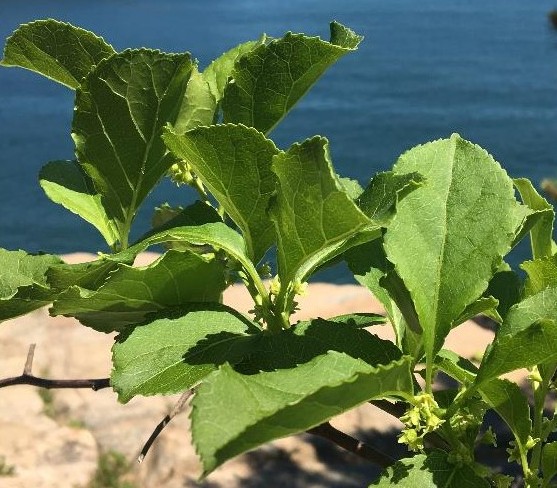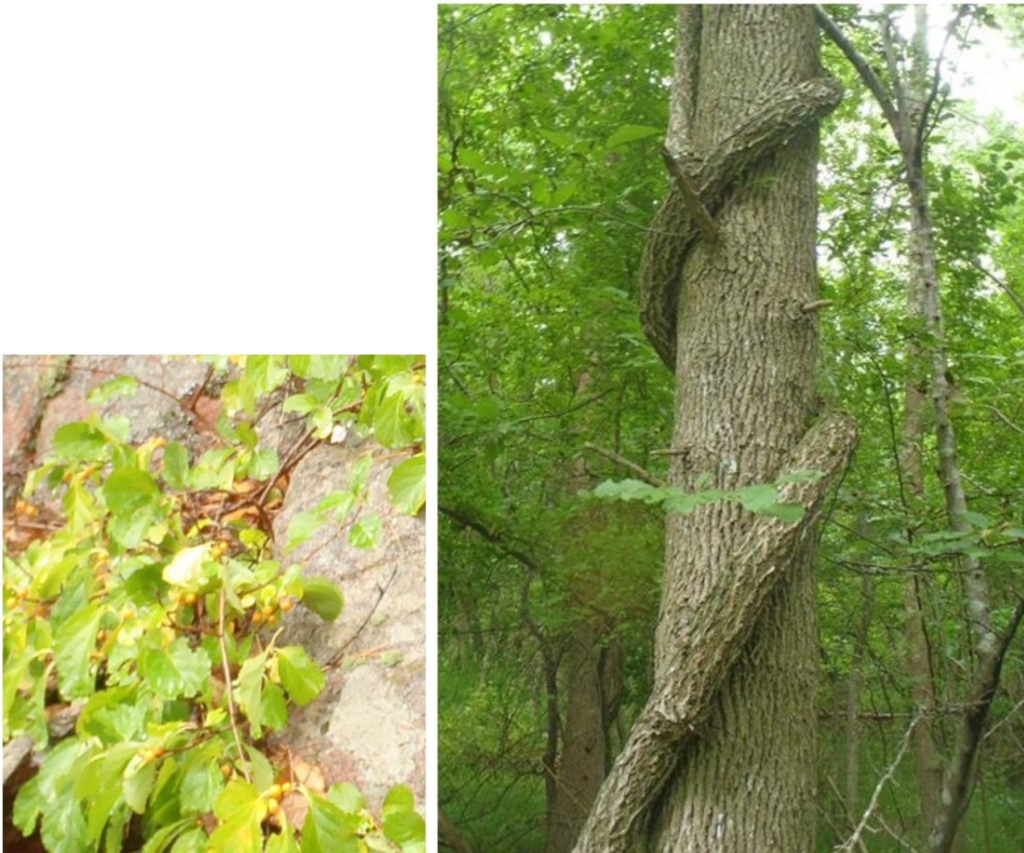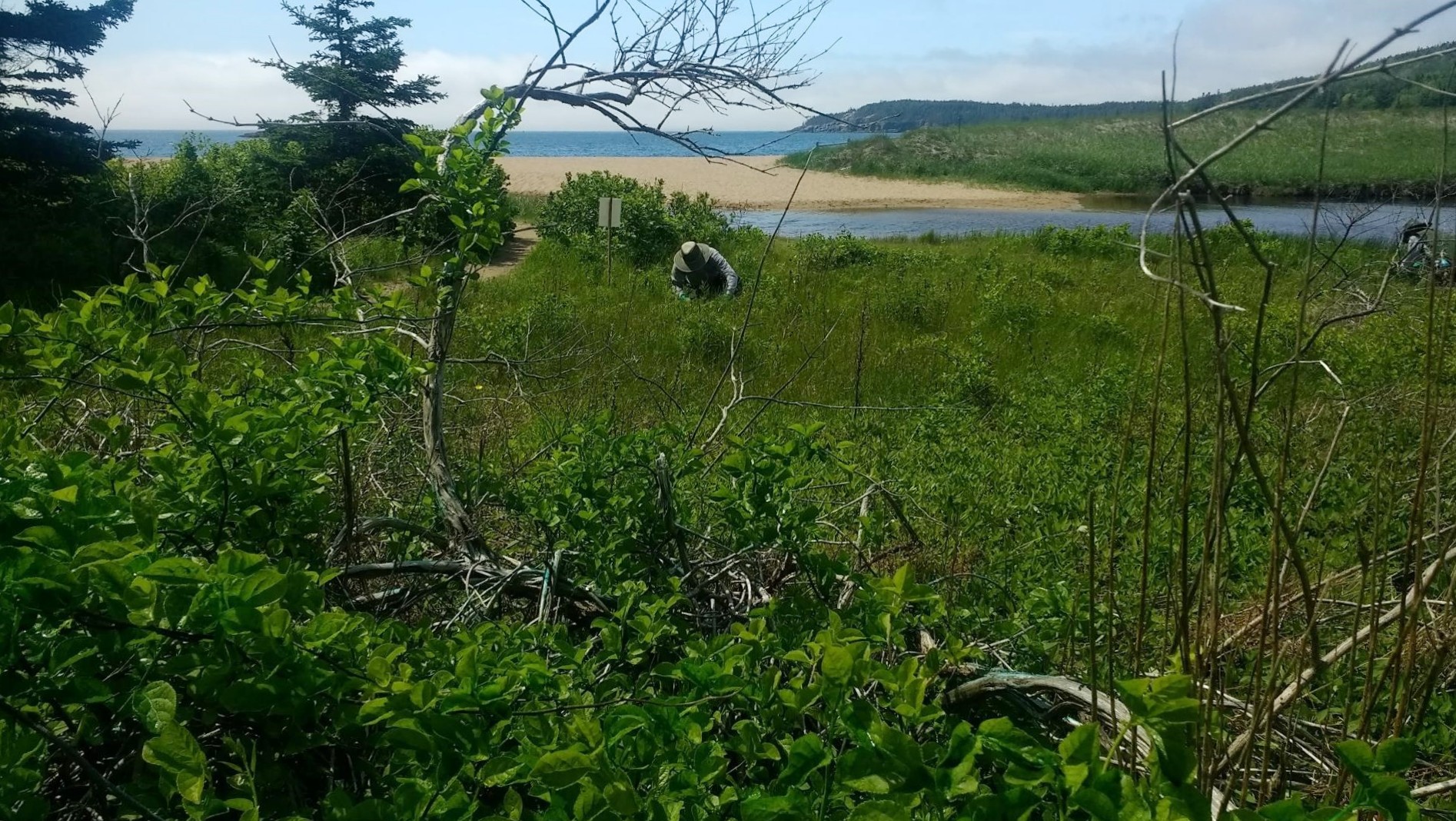Asiatic bittersweet
(Celastrus orbiculatus)
Help support a diverse and thriving Mount Desert Island by taking action in your backyard!
Help support a diverse and thriving Mount Desert Island by taking action in your backyard!
This woody vine was introduced as an ornamental plant. Bittersweet has small green five-petaled flowers in spring and yellow seeds that mature in the fall to reveal bright red arils. They have simple, alternate leaves with toothed edges.

Asiatic bittersweet (Celastrus orbiculatus) has simple, alternate leaves with toothed edges.

Bittersweet has small green five-petaled flowers in spring and yellow seeds that mature in the fall to reveal bright red arils.

Asiatic bittersweet is woody vine that was introduced as an ornamental plant.
Remove any time after leaf-out in late spring.
Dispose of plants responsibly.
Asiatic bittersweet is likely to re-sprout. Repeat the above methods as needed to eliminate plants from your property.
Consider replacing with native woody vines like river grape (Vitis riparia) or Virginia creeper (Parthenocissus quinquefolia)
Learn even more about Asiatic bittersweet on the maine.gov website: Asiatic bittersweet